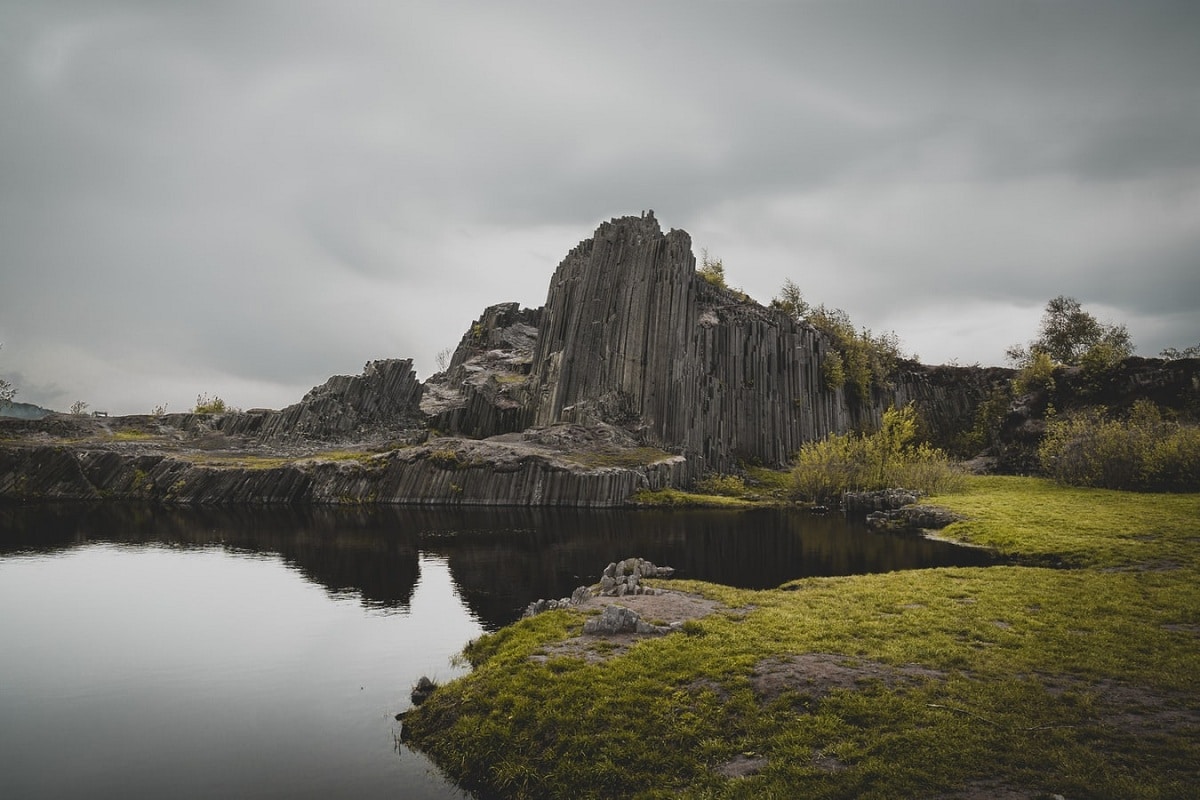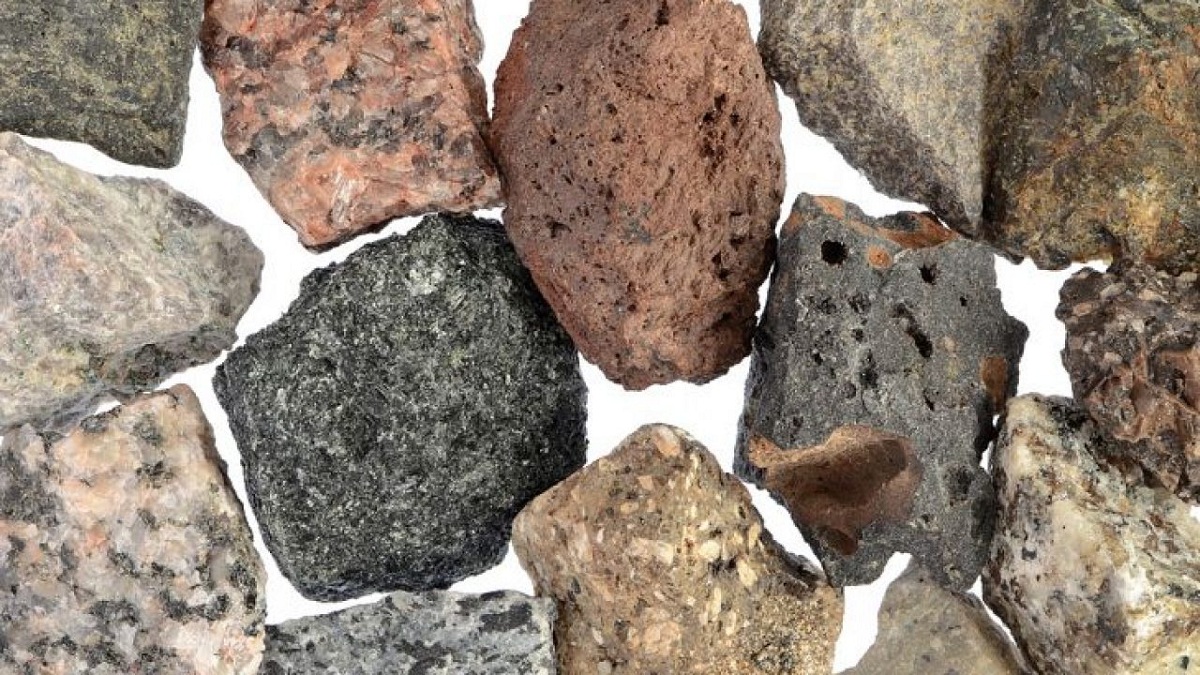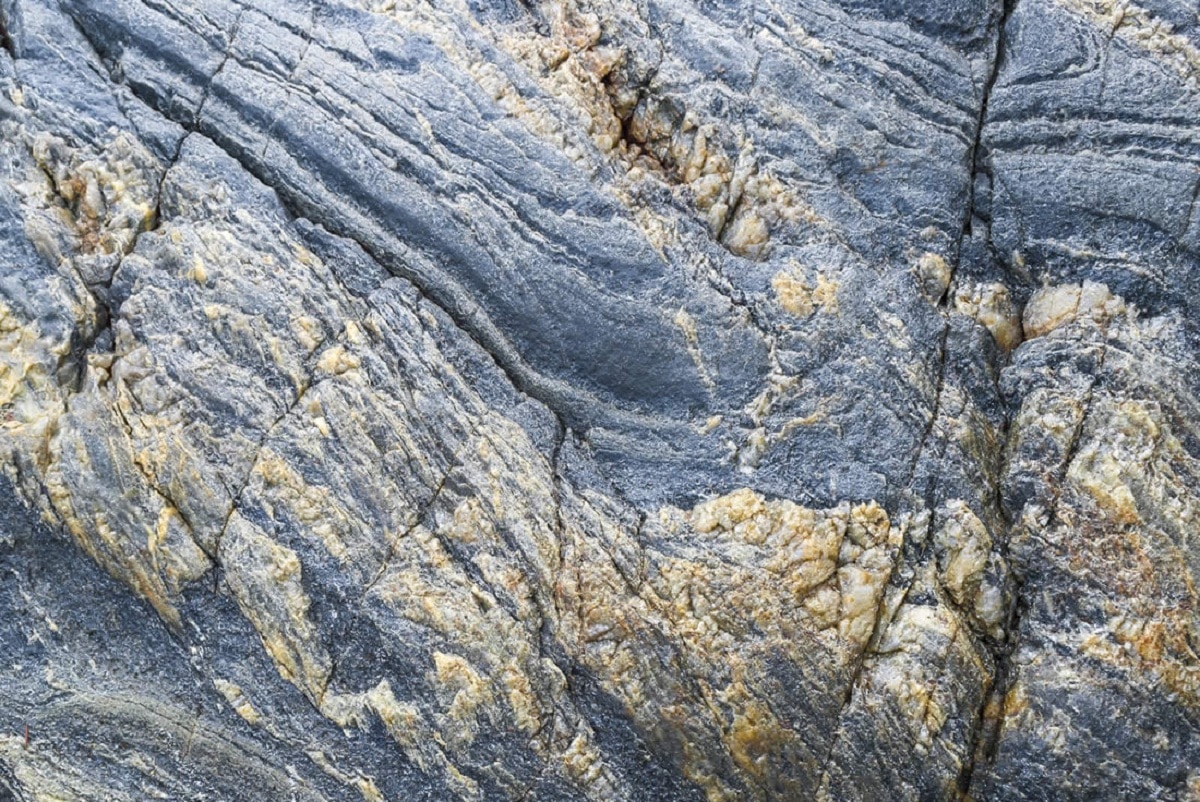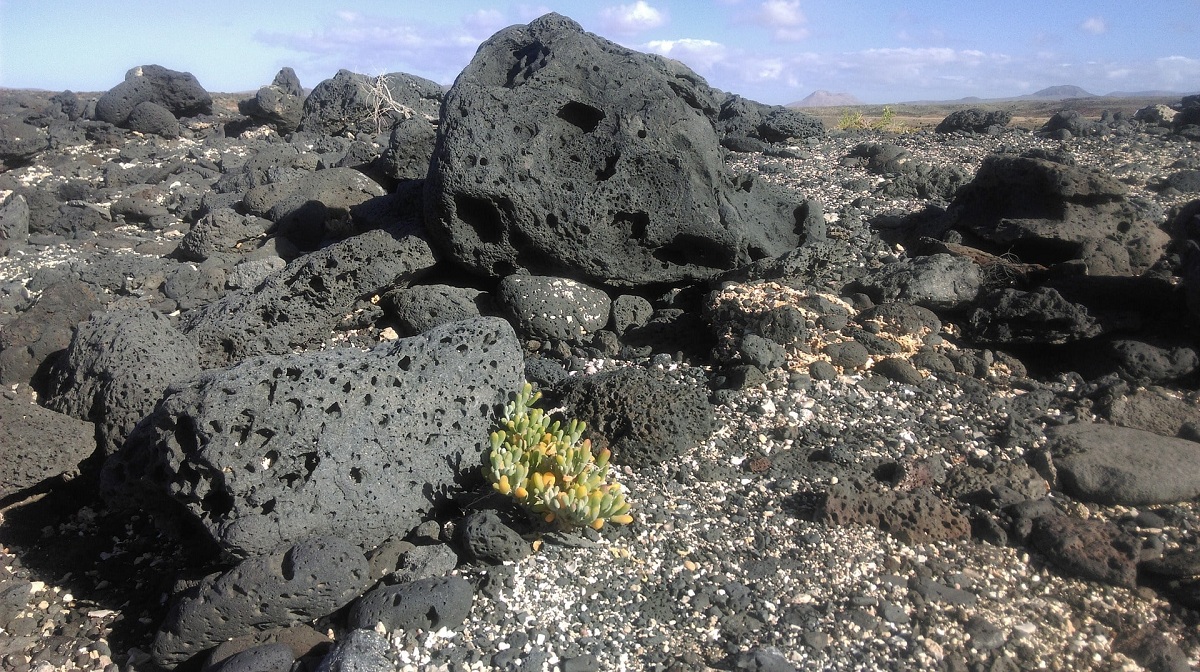
Among the different types of rocks we have the igneous rocks. The surface of our planet is full of rocks and a great variety of minerals. However, igneous rocks take on great importance since the upper layer of the earth's crust is 95% composed of them. Some are well known such as granite and obsidian, although there are a great variety of igneous rocks that you surely know.
Therefore, we are going to dedicate this article to tell you about all the characteristics and origin of igneous rocks.
Key features

They are also called magmatic rocks and are formed when molten rock in the form of magma begins to cool. It is when this amount the magma is beginning to cool when the minerals begin to crystallize and interlock their particulars. Magma can be cooled in two ways. On the one hand, we have the cooling on the earth's surface that occurs due to the effect of volcanic eruptions. Another way to cool down is inside the lithosphere. The lithosphere is the solid layer of the earth's surface. The vast majority of these rocks are formed under the earth's crust and are called plutonic igneous rocks. Rocks that cool on the surface are known as igneous volcanic rocks.
Although these types of rocks form a large high percentage in the upper part of the earth's crust, they are usually found under a layer of Metamorphic rocks and sedimentary rocks. They have great importance in the field of geology and their characteristics and composition help to understand the Earth's mantle. The composition of the Earth's mantle and all past tectonic elements helps us understand the formation and characteristics of our planet.
Classification of igneous rocks

Let's see what are the classifications that exist for igneous rocks. As we have seen before, they are usually classified directly from their formation. If they have cooled in the upper part of the earth's crust, they are called igneous volcanic rocks on the other hand, if they have cooled inside the lithosphere they are known as plutonic igneous rocks. Plutonics are also called intrusive rocks since they have formed inside the lithosphere. Here the magma cools in a much slower process which gives rise to rocks that have larger crystals. These crystals can be seen more easily.
Plutonic igneous rocks are transported to the earth's surface by processes of erosion or tectonic deformation. We must not forget that the earth's surface is made up of tectonic plates that move. The displacement is almost negligible by the human being but we are talking about the geological time scale, plutonic frogs are called plutons since they are large magma intrusions from which they are formed. It should be noted that the heart of the largest mountain ranges is formed by intrusive rocks.
On the other hand, extrusive igneous rocks or volcanic rocks are formed when magma is expelled to the outside of the earth's surface it cools much more quickly. The vast majority of these rocks are generated by the effect of volcanic eruptions and by the cooling of magma at high speed. The crystals that are created inside these rocks are smaller and less visible to the human eye. In this type of rocks it is very common to see the formation of holes or holes left by gas bubbles and that are formed in the solidification process.
Apart from these two great classifications we also have others. They are called the Philonian rocks. These rocks are halfway between one another. When a giant magma heads towards the surface and solidifies along the way, it forms the Phylonian rocks.
Types of igneous rocks

We are going to see what are the different classifications of igneous rocks according to their composition and texture.
Texture
Igneous rocks have the following textures:
- Vitreous: it is a very common texture in volcanic rocks. This texture is formed by being violently thrown into the atmosphere and by being affected by high-speed cooling.
- Aphanitic: They are volcanic rocks that have crystals of a microscopic size.
- Phaneritics: they are made up of large amounts of magma that have been applied more slowly and at a great depth.
- Porphyritic: They are rocks that have large crystals in the center and smaller ones on the outside. This is due to uneven cooling. The area that has larger crystals has cooled more slowly, while the outer part that has smaller crystals and cooled much more quickly.
- Pyroclastic: pyroclasts are generated in explosive-type volcanic eruptions. They do not usually have crystals and are made up of rock fragments.
- Pegmatitics: They are those that have a very coarse grain and are made up of crystals of more than one centimeter in diameter. They are formed when magma has a large amount of water and other volatile elements.
Chemical composition
We are going to see what are the different types of igneous rocks depending on the chemical composition that each of them has:
- Felsic: They are those rocks that are made up mostly of low-density silica and light colors. We see that the continental crust is formed mainly by this type of rocks and they contain approximately 10% pure silicates.
- Andesitic: they contain at least 25% dark silicates.
- Mafic: this type of rock is usually quite rich in dark silicates. They have a higher density and darker colors and usually make up the oceanic crust.
- Ultramafic: they have 90% of their composition dark silicates. They are usually rare rocks to find on the surface of the planet.
Among the best known examples of igneous rocks we have granite, which is the most common plutonic rock. The assault is also one of the widely known volcanic rocks due. As you can see, there are different types of igneous rocks depending on their formation.
I hope that with this information you can learn more about igneous rocks and their characteristics.